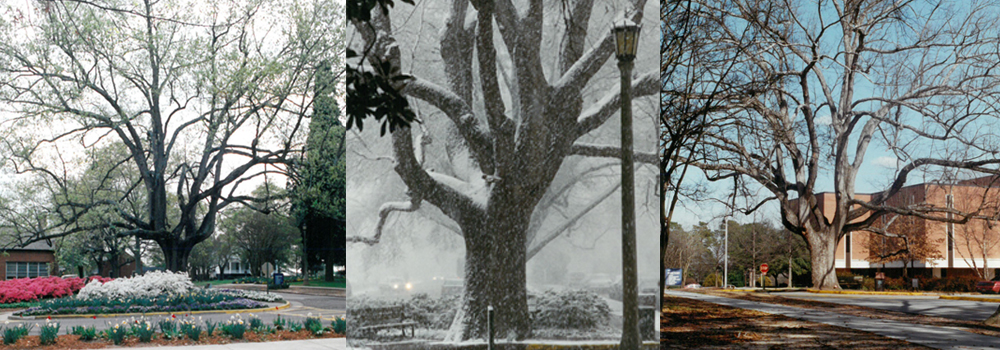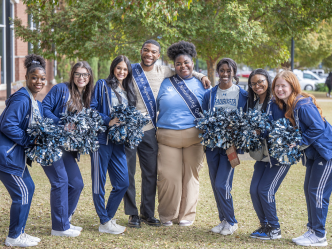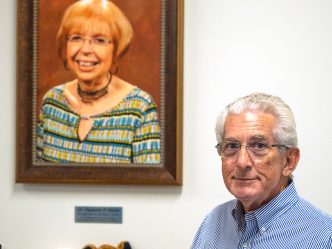Collecting stories
Few people ever really understand their purpose in life.
Fewer still know it from birth.
The knowledge is usually gained over the course of a lifetime, produced by any number of life’s little trials, and the ways in which we come to obtain it often say more about us than the act of knowing itself.
In that respect, Stephen Benét was an exception. He knew from the moment he was born that he had been born to tell stories.
The signs of that are clear.
Poetic verse – and the sense to use it well – was something ingrained in his spirit. It burned in his thoughts even as it flowed through his fingers, and though he owned his obsession wholly, it was almost certainly his family’s fault.
According to biographer Charles Fenton, Benét described his father, Col. James Walker Benét – commanding officer of the Augusta Arsenal from 1911-1919 – as “the finest critic of poetry” he had ever known. Likewise, he said of his mother, Frances, that his own fluency was “foreshadowed in her immense correspondence and occasional verse.” By the time he penned his first lines at the arsenal in the early 1900s, his older brother and sister were already part of writing circles at Vassar College and Yale. They, too, would leave behind literary legacies.
In many ways, Stephen was destined to put pen to paper. The thrill of it was in his blood, and his drive to do so has since made him immortal.
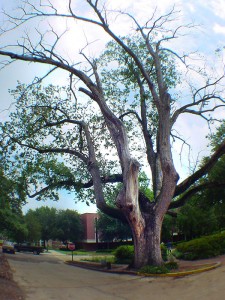

But writing wasn’t his only passion. In addition to being a world-class storyteller, Stephen Benét was also an avid outdoorsman.
It was through this second pursuit that he supposedly met a kindred spirit—an old white oak, a silent giant rooted in the arsenal’s eastern yard.
Met was, perhaps, too strong a word for what really happened. After all, there was likely no introduction. Probably no exchanging of words, one way or the other.
Instead, with pen and paper in hand, Stephen — then around thirteen — set about the work of his life, scribbled line by line in the giant’s kaleidoscope-speckled shadow.
In the tree’s shade, the two developed a kinship of sorts.
For the better part of eight years, they were, by some accounts, nearly inseparable. When he was home, Stephen would write and the giant would guard him faithfully from the sun — first as a boy, then as a man, and finally, as a published writer. It seemed a happy pairing: two souls entwined by intersecting pastimes. But like all earthly happiness, this, too, was destined to end.
In the summer of 1920, the pair would part ways for the final time.
Neither knew it was the last time they would ever meet. Stephen, now a Yale graduate, was leaving for Paris to continue his education, and the giant, rooted firmly in Augusta, would remain precisely where it was. Much later, and much further apart, tragedy would put even more distance between them, but not before each had served his purpose.
Looking back, it’s easy to believe the giant – now remembered as the original Arsenal Oak – might have been born into its purpose, too. It’s the human thing to do. We’re naturally programmed to want something so old and beautiful and kind to have feelings, to have emotions as we do. Simply put, we want it to have a purpose.
But if the oak was born for something, its purpose would have been so much greater than just providing shade.
No, if the oak was born with a purpose, then that purpose would have been to collect stories. And the greatest of those stories, in the end, was its own.
A good life lived
The story of the Arsenal Oak is a beautiful tale. In it are all the things that shape memory into a legend.
War and strife. Love and growth. Pain and hope.
But even from a purely historical standpoint, the Arsenal Oak’s life was precious.
By the time Stephen Benét first laid eyes on it in 1911, the oak had already seen the city of Augusta grow from a small colonial trading post into one of the South’s most important centers of industry. Fifty years earlier, it had borne silent witness as Confederate militia in the company of Gov. Joseph Brown took the arsenal from the United States. Even before that, though, the tree had witnessed another major turning point in Augusta history.
In 1827, the tree would have already reached adulthood when construction began on the Augusta Arsenal – future home of both Stephen Benét and Augusta University’s Summerville Campus.
But as grand and important as the tree grew to be, like all trees, it, too, had a humble start.
Unfortunately, that start is somewhat muddled.
Like all Quercus alba, the Arsenal Oak began life as an acorn, but that’s generally where the agreement ends.
Prior to the oak’s removal in 2004, the late David Foster, former history columnist for Augusta Magazine, interviewed several sources affiliated with effort to save the Arsenal Oak. Those interviews, shared through Foster’s poignant storytelling, helped bring to light the disparity surrounding the tree’s “unknown” age in its final days on Earth.
Roy Simkins, principal of Simkins Land Company, told Foster he believed the oak was planted as a landscaping addition in the early 1800s. This he defended by citing the tree’s stunted growth and the broad growth pattern of its branches.
Conversely, Henry Frischknecht, owner of Empire Tree and Turf and the expert charged with trying to save the tree, told Foster he believed the Arsenal Oak could have sprouted well before the 19th century. It could, he said, have even sprouted in the wild.
Even today, though, pinpointing the tree’s exact age is difficult. To his credit, at the time, Foster agreed with neither account.
Like many Augustans, he chose to focus instead on the tree’s beauty and the sadness of its future passing.
“As I walked around the old oak last summer, I got a little twinge of sympathy myself thinking on how much good luck this old timer has had and how sad that luck was running out,” he wrote. “Just to stand here through so many turnings of the seasons is … a testimony to every living thing’s will to survive.”
It was a painful realization for Foster.
As a lover of history, he would have admired not only the weight of the tree’s many years on Earth, but also the wealth of things it had seen in those years. In a way, then, the oak had collected his story as well.
In remembrance, he wrote, “Like sitting in a pew at a funeral, it is best to think on a good life lived than the death that brought you there.”
Isn’t that, more than anything, the mark of a good life lived?
To be remembered fondly?
Perhaps.
But for some, it would never be enough.
With renewed purpose
Deb Barshafsky, strategist for the Augusta University Heritage Project, was a student at Augusta College in the 1980s. Like many of her classmates, she, too, had a special relationship with the Arsenal Oak.
It was her meeting place – a place of refuge from the cruel Georgia sun. As it had with Benét and Foster, the tree collected her story, as well, and that was something she has never forgotten.
So, when students brought forward the idea to bring a descendant of the original oak back to campus, she said she was immediately invested.
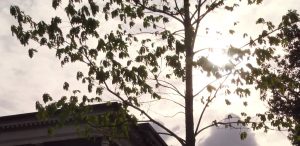

The result of that shared effort now stands before the Benét House on the Summerville Campus. It isn’t a replacement. It never will be. But the new Arsenal Oak, like its ancestor, does have a purpose.
Barshafsky illustrated that point with a story of her own.
“A few weeks ago, a friend of mine was on campus with her little grandson,” she said. “She took a picture of him standing next to the tree.”
Barshafsky said when she saw the picture, she thought about how wonderful it was that future generations could fall in love with the Arsenal Oak’s descendant the way she’d fallen in love with the original.
“Just seeing that little guy, who knows nothing of this campus, or the history of the university, or any of the decisions that were made to bring us together,” she said. “He’s just a little guy out for a walk with his grandmother, and he wanted to see the tree. That was really meaningful to me, to see him standing there with his little baseball cap next to the tree.”
In a way, the moment was one of the first steps toward helping the new Arsenal Oak live up to its purpose. In that photograph are the seeds of a story yet to be written. And the oak, like its parent, was eager to collect it.
Barshafsky said she hopes to see more of the same in the future. And she’s confident she will.
After all, the original oak never disappointed, and the acorn, as they say, never falls far from the tree.
“We’re asking a lot from that little tree,” she said with a smile, “but I think it’s going to deliver.
Augusta University’s new Arsenal Oak will be dedicated in a ceremony at 1 p.m. Friday, April 29, in front of the Benét House.
 Augusta University
Augusta University
